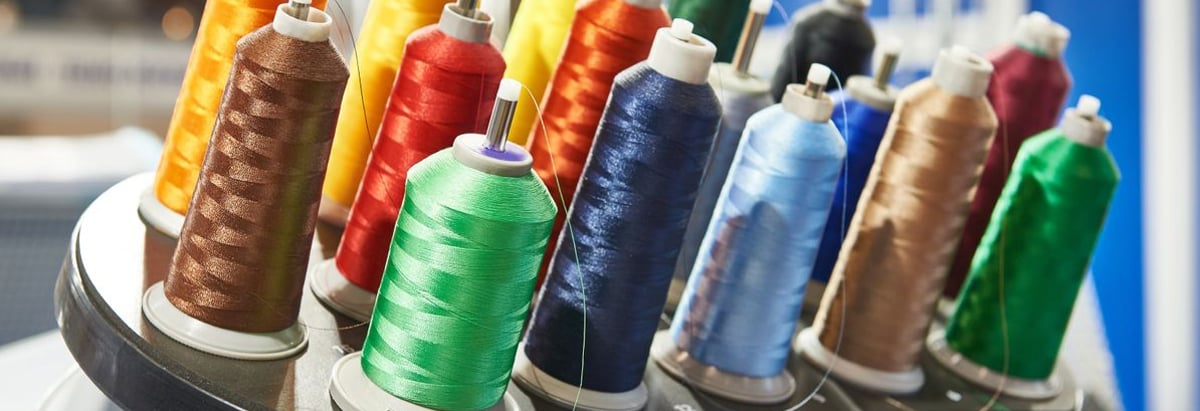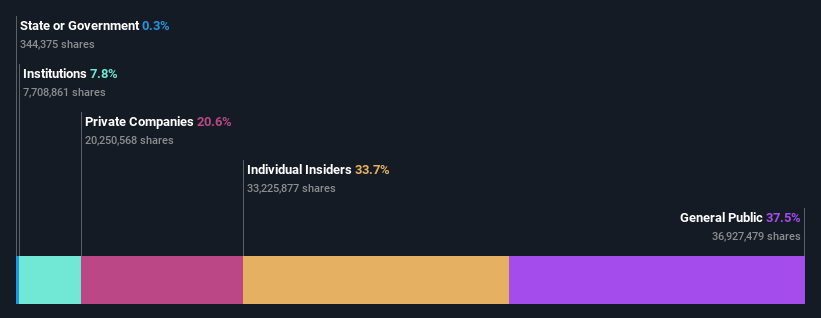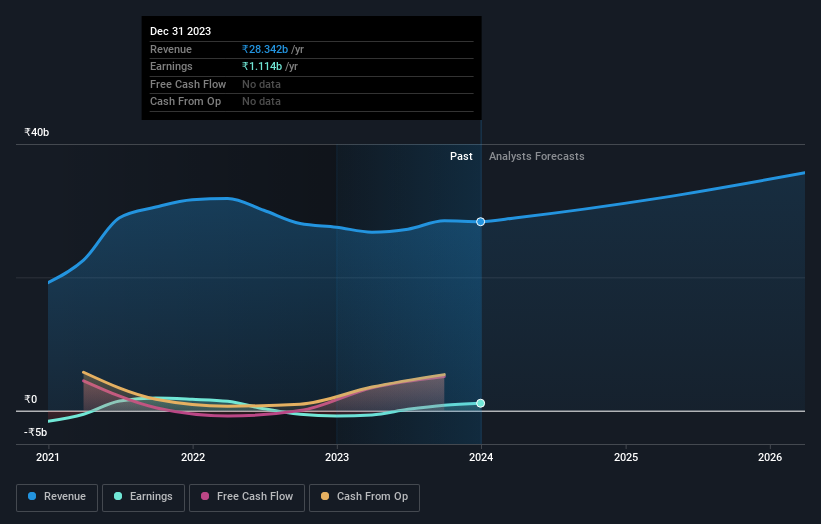Himatsingka Seide Limited's (NSE:HIMATSEIDE) market cap up ₹2.1b last week, benefiting both individual investors who own 38% as well as insiders

Key Insights
- Himatsingka Seide's significant individual investors ownership suggests that the key decisions are influenced by shareholders from the larger public
- A total of 8 investors have a majority stake in the company with 52% ownership
- Insiders own 34% of Himatsingka Seide
Every investor in Himatsingka Seide Limited (NSE:HIMATSEIDE) should be aware of the most powerful shareholder groups. With 38% stake, individual investors possess the maximum shares in the company. Put another way, the group faces the maximum upside potential (or downside risk).
Following a 18% increase in the stock price last week, individual investors profited the most, but insiders who own 34% stock also stood to gain from the increase.
Let's take a closer look to see what the different types of shareholders can tell us about Himatsingka Seide.
View our latest analysis for Himatsingka Seide

What Does The Institutional Ownership Tell Us About Himatsingka Seide?
Institutional investors commonly compare their own returns to the returns of a commonly followed index. So they generally do consider buying larger companies that are included in the relevant benchmark index.
We can see that Himatsingka Seide does have institutional investors; and they hold a good portion of the company's stock. This implies the analysts working for those institutions have looked at the stock and they like it. But just like anyone else, they could be wrong. When multiple institutions own a stock, there's always a risk that they are in a 'crowded trade'. When such a trade goes wrong, multiple parties may compete to sell stock fast. This risk is higher in a company without a history of growth. You can see Himatsingka Seide's historic earnings and revenue below, but keep in mind there's always more to the story.

Hedge funds don't have many shares in Himatsingka Seide. Our data suggests that Dinesh Himatsingka, who is also the company's Top Key Executive, holds the most number of shares at 18%. When an insider holds a sizeable amount of a company's stock, investors consider it as a positive sign because it suggests that insiders are willing to have their wealth tied up in the future of the company. Meanwhile, the second and third largest shareholders, hold 8.7% and 6.4%, of the shares outstanding, respectively. Interestingly, the second-largest shareholder, Shrikant Himatsingka is also Chief Executive Officer, again, pointing towards strong insider ownership amongst the company's top shareholders.
We also observed that the top 8 shareholders account for more than half of the share register, with a few smaller shareholders to balance the interests of the larger ones to a certain extent.
Researching institutional ownership is a good way to gauge and filter a stock's expected performance. The same can be achieved by studying analyst sentiments. While there is some analyst coverage, the company is probably not widely covered. So it could gain more attention, down the track.
Insider Ownership Of Himatsingka Seide
The definition of an insider can differ slightly between different countries, but members of the board of directors always count. Company management run the business, but the CEO will answer to the board, even if he or she is a member of it.
I generally consider insider ownership to be a good thing. However, on some occasions it makes it more difficult for other shareholders to hold the board accountable for decisions.
It seems insiders own a significant proportion of Himatsingka Seide Limited. It has a market capitalization of just ₹14b, and insiders have ₹4.8b worth of shares in their own names. We would say this shows alignment with shareholders, but it is worth noting that the company is still quite small; some insiders may have founded the business. You can click here to see if those insiders have been buying or selling.
General Public Ownership
With a 38% ownership, the general public, mostly comprising of individual investors, have some degree of sway over Himatsingka Seide. While this group can't necessarily call the shots, it can certainly have a real influence on how the company is run.
Private Company Ownership
We can see that Private Companies own 21%, of the shares on issue. Private companies may be related parties. Sometimes insiders have an interest in a public company through a holding in a private company, rather than in their own capacity as an individual. While it's hard to draw any broad stroke conclusions, it is worth noting as an area for further research.
Next Steps:
I find it very interesting to look at who exactly owns a company. But to truly gain insight, we need to consider other information, too. Be aware that Himatsingka Seide is showing 2 warning signs in our investment analysis , you should know about...
Ultimately the future is most important. You can access this free report on analyst forecasts for the company.
NB: Figures in this article are calculated using data from the last twelve months, which refer to the 12-month period ending on the last date of the month the financial statement is dated. This may not be consistent with full year annual report figures.
Valuation is complex, but we're here to simplify it.
Discover if Himatsingka Seide might be undervalued or overvalued with our detailed analysis, featuring fair value estimates, potential risks, dividends, insider trades, and its financial condition.
Access Free AnalysisHave feedback on this article? Concerned about the content? Get in touch with us directly. Alternatively, email editorial-team (at) simplywallst.com.
This article by Simply Wall St is general in nature. We provide commentary based on historical data and analyst forecasts only using an unbiased methodology and our articles are not intended to be financial advice. It does not constitute a recommendation to buy or sell any stock, and does not take account of your objectives, or your financial situation. We aim to bring you long-term focused analysis driven by fundamental data. Note that our analysis may not factor in the latest price-sensitive company announcements or qualitative material. Simply Wall St has no position in any stocks mentioned.
About NSEI:HIMATSEIDE
Himatsingka Seide
Designs, develops, manufactures, distributes, and retails home textile products in North America, India, the Asia Pacific, Europe, the Middle East, Africa, and internationally.
Fair value with mediocre balance sheet.
Similar Companies
Market Insights
Community Narratives




